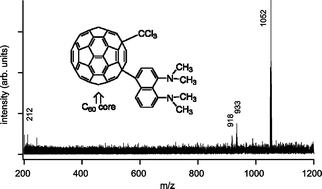MALDI-Fourier transform mass spectrometric and theoretical studies of donor–acceptor and donor–bridge–acceptor fullerenes
Abstract
Fourier-transform ion cyclotron resonance (FTICR) mass spectrometric studies have been performed on donor–acceptor and donor–bridge–acceptor


 Please wait while we load your content...
Please wait while we load your content...